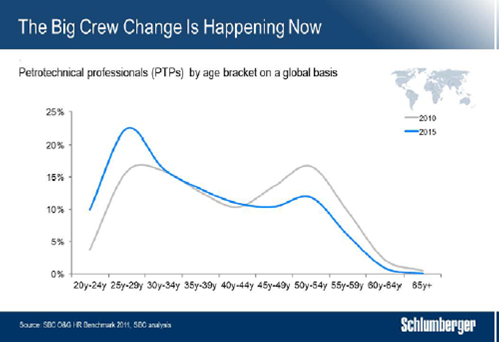One of the biggest issues facing an Ammonia refrigeration facility today is finding qualified and competent technicians to operate and maintain the system. It’s not uncommon for me to receive 2-3 emails or calls a week asking for help finding qualified help.
The baby-boomers are retiring in droves and industry in general has not prepared by training their replacements. Youth today (generally speaking) didn’t attend technical schools or even shop classes growing up so they lack the basic skills. Add to that the very real issue that “blue collar” work is not a field that most young people respect or desire to be involved with and we have a shortage just due to demographics.
There are other factors involved too: A few years ago in Pennsylvania we lost a very large number of PSM professionals who left our industry to go work with fracking companies involved with the natural gas industry. They left because operating a PSM program in the fracking fields is about 1/2 the work for about twice the pay. This morning I came across a blog post on “Peak Labor” that provides this chart:
Folks, the issues we have finding good help are not unique to our industry and they are not going to go away anytime soon!
Basic economics tells us that as an items supply decreases below the demand the price will have to go up. Is your business preparing for this?
If you choose to take the route that most facilities are taking right now – lowering the technical competence requirements – is your PSM program written to take into account this lower level of experience and skill? The procedure we write on how to drain an oil pot needs to be a lot more detailed for it to be safe for an operator with six months experience! While ammonia training schools such as WMI or GCAP can help prepare your new recruits for their job, it’s still going to take years to build in the experience needed to replace a 10 year veteran; your PSM program (specifically your PHA) needs to consider the hazards posed by these inexperience operators.


